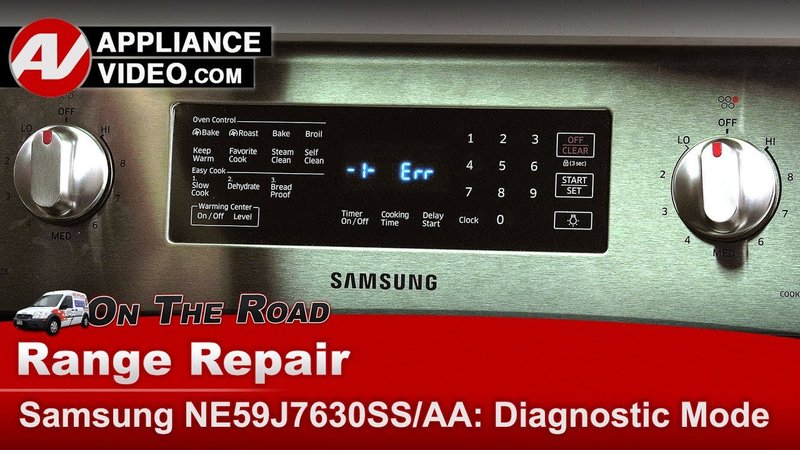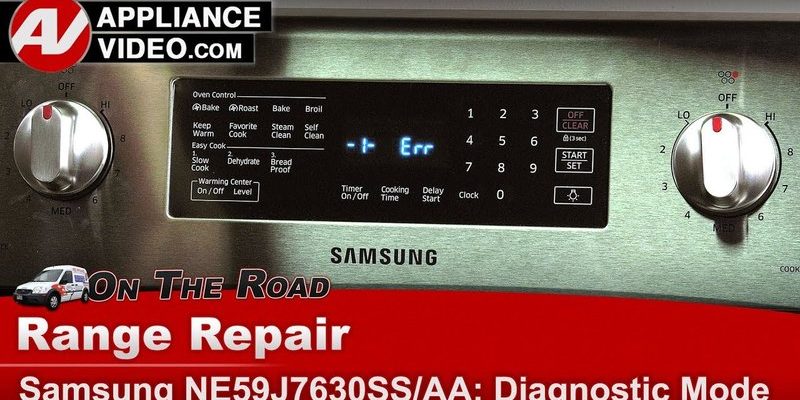
The “F2” error code in Samsung ovens and ranges is like a tiny red flag from your appliance that something is amiss. It’s your oven’s way of communicating a fault, typically related to the temperature sensor or the oven’s temperature itself. Just like a car’s check engine light, this code is an indicator that needs attention. Ignoring it is not the best strategy, as it can lead to bigger issues down the road. But don’t fret; understanding what’s happening can help you address the issue without a panic.
Understanding the F2 Error Code
The F2 error is often linked to the oven’s temperature sensor, which is responsible for monitoring and regulating the oven’s heat. Think of this sensor like a thermostat in your house. If it goes haywire, the oven might overheat or not heat at all, leading to unevenly cooked meals. When this sensor malfunctions, your oven displays the F2 code as a call for help.
This error could also indicate that your oven’s internal temperature has exceeded safety limits. Just like your body throws a fever when something’s not right, your oven flashing this code is its way of saying, “Hey, I’m too hot!” It could be due to a faulty sensor or even a stuck relay on the oven’s control board. No matter the cause, it’s crucial to pay heed to this warning.
In some cases, the problem might be temporary and can be resolved with a simple reset — akin to rebooting your smartphone. However, if the error persists, it’s a sign that further inspection is necessary. Continuing to use an oven with this error could lead to safety hazards or cause further damage to the appliance.
What to Do When You See the F2 Error
Here’s the deal: when faced with the F2 error, the first step is to ensure safety. Turn off the oven and unplug it from the power source to prevent any risk of electrical shock or further damage. It’s a bit like taking a breather when you’re feeling overwhelmed — sometimes things just need to cool down.
Next, consider inspecting the oven’s temperature sensor. If you’re handy, you might locate it inside the oven cavity at the back wall and check for any visible damage or disconnections. However, if you’re not comfortable with this step, it’s wise to call in a professional. Think of it like calling a trusted friend to help when you’re stuck — there’s no shame in seeking help.
If the sensor appears intact, but the problem persists, the issue might lie deeper within the control board or wiring. At this point, professional assistance can ensure a thorough and safe diagnosis. Trying to tackle it yourself without proper knowledge could result in more harm than good, like trying to fix a leaky faucet without the right tools.
Prevention and Maintenance Tips
To avoid the F2 error from reappearing, consider practicing regular oven care. Just like maintaining your car with regular oil changes, routine checks can extend the life of your appliance. Cleaning the oven interior and ensuring the vents are clear can prevent overheating.
Also, be mindful of the types of cookware you use. Heavy, dense items can cause heat to build up, similar to wearing a heavy coat on a hot day. Make sure not to block the oven’s vents with foil or oversized dishes, allowing the heat to circulate freely for consistent cooking.
Finally, schedule regular maintenance checks with a professional technician. Think of it like going for your annual health check-up; preventative care can catch potential issues early. Keeping an eye on your appliance’s performance can save you from unexpected breakdowns and those pesky error codes.
In conclusion, while the F2 error might seem like a minor inconvenience, ignoring it can lead to bigger troubles. By understanding what this code means and taking the right steps, you can ensure your Samsung oven or range continues to serve up your favorite meals safely and efficiently.
